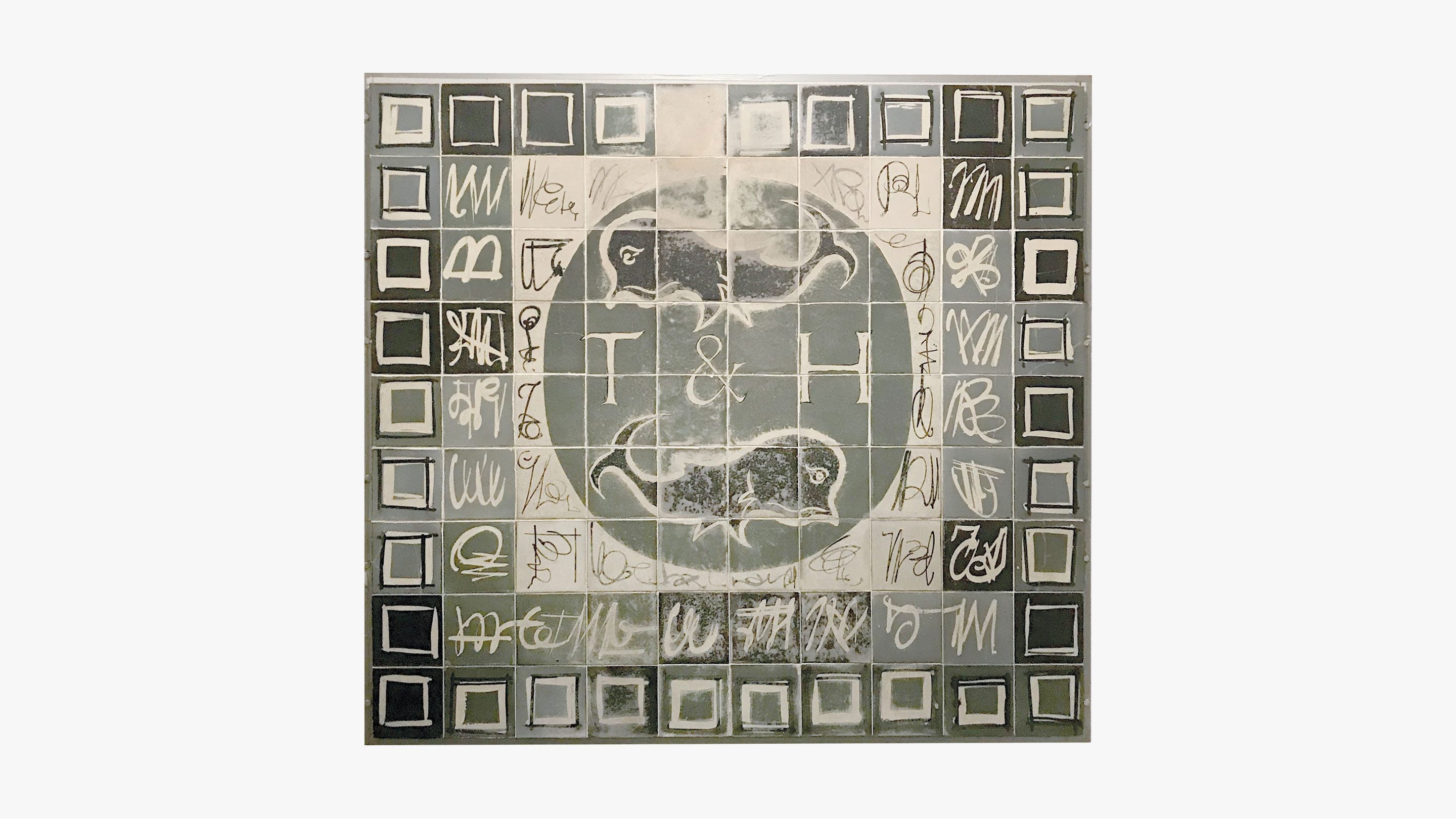Thames & Hudson was founded in 1949 by Walter and Eva Neurath. Their passion and mission was to create a ‘museum without walls’ and to make accessible to a large reading public the world of art and the research of top scholars. To reflect its international outlook the name for the company linked the rivers flowing through London and New York, represented in its logo by two dolphins symbolizing friendship and intelligence, one facing east, one west, suggesting a transatlantic connection.
Today, still an independent, family-owned company, Thames & Hudson is one of the world’s leading publishers of illustrated books with over 2,000 titles in print. We publish high-quality books across all areas of visual creativity: the arts (fine, applied, decorative, performing), architecture, design, photography, fashion, film and music, and also archaeology, history and popular culture. Our children’s books list is also expanding. Headquartered in London, we have a sister company in New York (Thames & Hudson Inc.). Since 1970, Thames & Hudson Australia has operated from Melbourne as both an originating publisher and sales and distribution provider. We also have subsidiary sales and distribution companies in Hong Kong (Thames & Hudson Asia) and Paris (Interart).

History
Walter Neurath was born in Vienna in 1903. In 1938, he left his home city – where he ran an art gallery and published illustrated books – for London. He initially worked as production director of Adprint, a business established by fellow Viennese émigré Wolfgang Foges. Neurath and Foges went on to pioneer the concept of what is today known as book packaging (or co-edition publishing), in which book ideas are conceived, commissioned, produced and sold to publishers operating in different markets and in different languages in order to create large print-runs and thereby lower unit production costs. Neurath’s concept was the first of many innovations that through Thames & Hudson he would introduce to the world of publishing.
Wishing to take co-edition book packaging further, and recognizing the need to amortize the high production costs of illustrated books, Neurath established his own publishing house, incorporating offices in London and New York in the autumn of 1949. Eva Neurath, who had arrived in London from Berlin in 1939, was co-founder.
Of the ten titles that were published in Thames & Hudson’s first list in 1950, English Cathedrals, with photographs by Martin Hürlimann, was the first and most successful. A testament to the company’s strong belief from the very start in the longevity of books, it remained in print until 1971. Also appearing in the first year of publication was Albert Einstein’s Out of My Later Years, an early indication of the programme’s breadth.
With the gradual and successful expansion of the list, which grew from ten titles in 1950 to 144 in 1955, the company outgrew its High Holborn offices and moved, in 1956, to a Georgian townhouse at 30 Bloomsbury Street, just off Bedford Square, then the epicentre of book publishing in London. The company remained at that address, eventually expanding to five houses, until 1999, when it returned to High Holborn. After twenty-five years at High Holborn, Thames & Hudson began a new chapter with a move to Britannia Street in King’s Cross, the site of a former Gagosian gallery that operated as an art space for nearly twenty years.
In 1958, Thames & Hudson launched what is still one of its best-known series, the World of Art, which became the backbone of its highly varied list. Characterized by their pocketable size and black spines, the series expanded in just seven years to include 49 titles. Almost 60 years later, over 300 titles have appeared in the series, of which, according to Christopher Frayling, ‘there are paint-stained copies in every art school in the land’.
Other major series that imparted depth and prestige to the list were Ancient People and Places, edited by Glyn Daniel, who from the 1950s helped to pioneer a wider interest in archaeology, both in book form and on television. More than 100 titles were published in the series over a 34-year period. The large-format Great Civilizations series, published from 1961, featured contributions by such esteemed academics as Alan Bullock, Asa Briggs, Hugh Trevor-Roper, A. J. P. Taylor and John Julius Norwich.
Having built one of the most important publishing houses in Europe in less than two decades, Walter Neurath died in 1967 at the age of 63. Sculptor Henry Moore wrote that ‘his death [was] a loss to our cultural life’. Sir Herbert Read observed that Neurath ‘more than any other single individual [was] responsible for the revolution in the publishing of art books’ and was ‘one of those rare entrepreneurs who successfully combine business acumen with idealism’.
Eva Neurath became chairman. Walter’s son, Thomas, who with his sister Constance had joined the company in 1961, became Managing Director; Constance later served as Art Director for several decades. Thomas stepped down from his role as Managing Director in 2005, assuming the role of Chairman until 2021. He died in June 2025. His family continues to be involved in the business: Thomas’s older daughter, Johanna Neurath, is Chair of Thames & Hudson Publishing Ltd, while his younger daughter, Susanna Reisz Neurath, is Chair of Thames & Hudson Holdings Ltd.
Innovation
From producing the first commercial edition of The Book of Kells to the triumphant publication of the six-volume Vincent van Gogh – The Letters, from such technical innovations as ‘French folds’ to the then controversial documentation of graffiti art in Subway Art, Thames & Hudson has always been at the vanguard, both culturally and in its production techniques.
In March 2020, Thames & Hudson unveiled its new Pentagram-designed identity and a new look for its signature World of Art series. Relaunched with the tagline ‘See the arts through expert eyes’, the World of Art now carries a bold new look created by Dutch design studio Kummer & Herrman. The cover design features fluid shapes based on a grid inspired by the Golden Ratio, the system of mathematical proportion believed for millennia to be the secret of aesthetic harmony in nature, art and design.
The world of art and scholarship continues to be at the heart of Thames & Hudson’s publishing programme, which also remains true to its founding principle: to provide a ‘museum without walls.’


